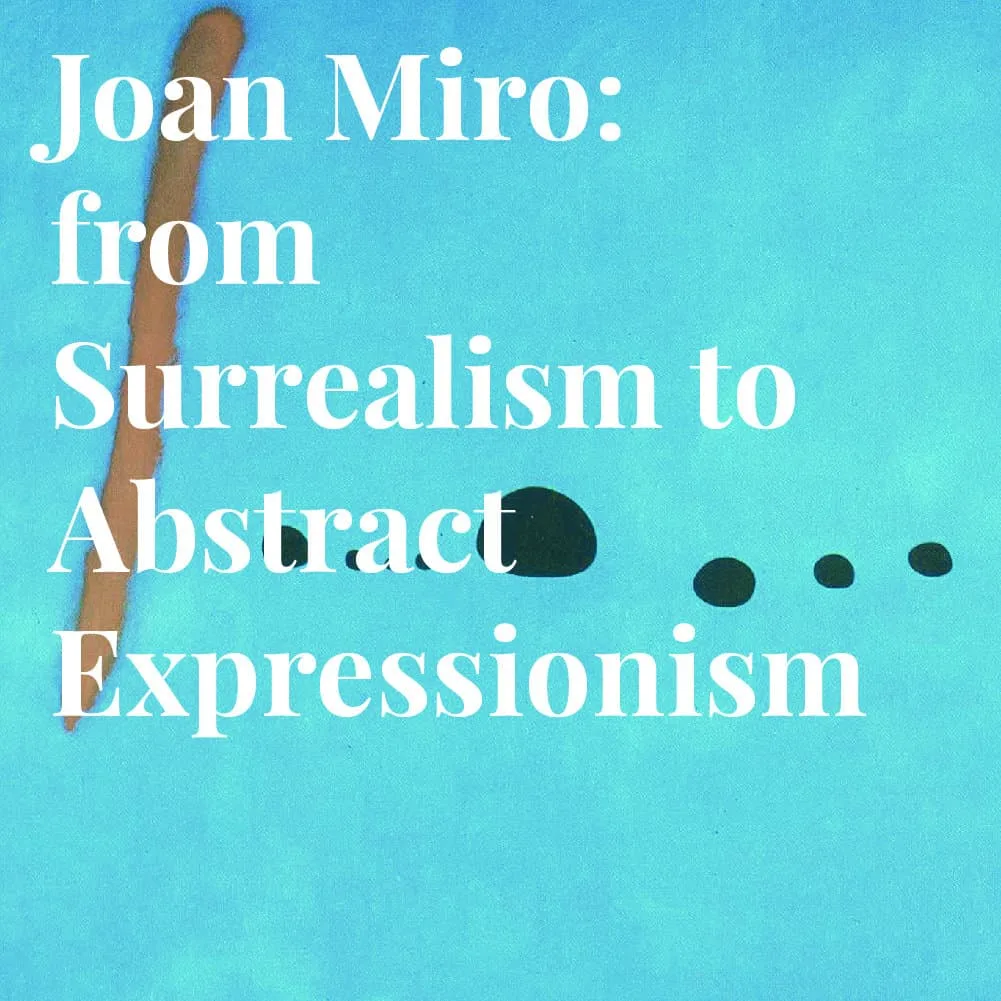Born in Barcelona in 1893, Miro grew up in the countryside of Cataluna. In the 20s he moved to Paris to pursue his artistic career. Miro returned to Spain after the beginning of World War II, settling in the island of Palma de Mallorca, where he lived in partial isolation under the fascist regime of Francis Franco. He died in Palma de Mallorca on Christmas day of 1985.
Is Miro a Surrealist?
While he is often mentioned among the great fathers of Surrealism, Joan Miro never officially joined the movement.
Even though he shared many of its political and artistic stances, Miro’s skepticism toward surrealist automatism was one of the main reason why he never fully identified with the movement.
Surrealism and the Subconscious
Following a somewhat misguided understanding of Freudian theories, Surrealist artists believed in a superego that acted as a censor, a restraint, to men’s instincts and desires.
According to Surrealists, this censorship of impulses was the ground upon which bourgeois society was founded, and it was the artist’s duty to expose it and go beyond it, revealing the “truth” to the rest of humanity.
To achieve the necessary state of freedom, they devised a series of games and techniques that aimed to suppress conscious control over the creative process.
Automatic drawing
In automatic drawing, the hand is allowed to move freely on the paper, independently from rational control. Chance and accident are introduced and welcomed in the art-making practice, and the final work would often be analyzed and interpreted as a manifestation of the subconscious and the psyche.
Miro used automatic drawing as a starting point for many of his works, but he never quite agreed with Surrealism’s psychological claims.
If you have any notion of where you are going, you will never get anywhere.
Joan Miró
Miro’s art
While surrealists attempted to legitimize their automatic drawing by charging them with psychological meaning, Miro’s art is blatantly unapologetic in the way that it doesn’t seek symbolic meaning as validation.
The lack of excuses shouldn’t, however, be confused with a lack of purpose. Instead, the content of Miro’s art ought to be sought within the strokes themselves, as meaning and form are created simultaneously through the artist expressive gestures.
A form gives me an idea, this idea evokes another form, and everything culminates in figures, animals, and things I had no way of foreseeing in advance.
Miro’s legacy
When many Surrealists escaped to the United States during WWII, they struggled to establish their art in the new world.
American artists failed to recognize the innovation of surrealist art, which they felt was deeply rooted in the corrupt tradition of European figurative painting.
Miro was the notable exception. The abstract rendering of real forms, the dynamism of composition, and especially the use of meaningful strokes, resonated deeply with American artists and set the foundation for the Abstract Expressionist movement.
Pollock, Calder, Matta, Gorky, Motherwell, all mention Miro as their inspiration and influence.
Is Miro underrated?
This consideration takes me to the last point, that is that Miro’s importance has often been overlooked by contemporary historians.
Possible explanations are that his art being studied within the wrong context, and especially as a consequence of a misguided understanding of Surrealism at large.
As Argan puts it, Surrealism has suffered a degrading popularization in mainstream culture in recent decades, which diminished Surrealism to a mean to evade reality with ambiguity and paradox.
In many of today’s writing (even on curated exhibitions catalogs and reviews!) Surrealism has become synonym with the art of the subconscious, of the implausible, of the nonsense. Additionally, the puzzling popularity rise of artists such as Salvador Dali (who was only briefly associated with the group) contributed to redefining what Surrealist art looks like in the collective consciousness.
“Child-like” art, playfulness, naive and so on are objectives often used to describe Miro’s work, often ignoring the influence that his open-ended explorations had on subsequent art.
If we consider his art within the context of Surrealism, especially the modern understanding as “art of the subconscious”, Miro’s art falls flat. But if we look at it within the context of Modernism and its strive toward pure abstraction, Miro was one of the greatest contributors toward the “assassination” of bourgeois figurative art.
Arguably, Calder, Gorky, Pollock… the whole Abstract Expressionism would have been impossible without Miro’s precedent.
See Also:
- Play Like a Surrealist: 13 Surrealist Games and Techniques
- Mirò on the farm Lesson Plan, National Gallery of Art

